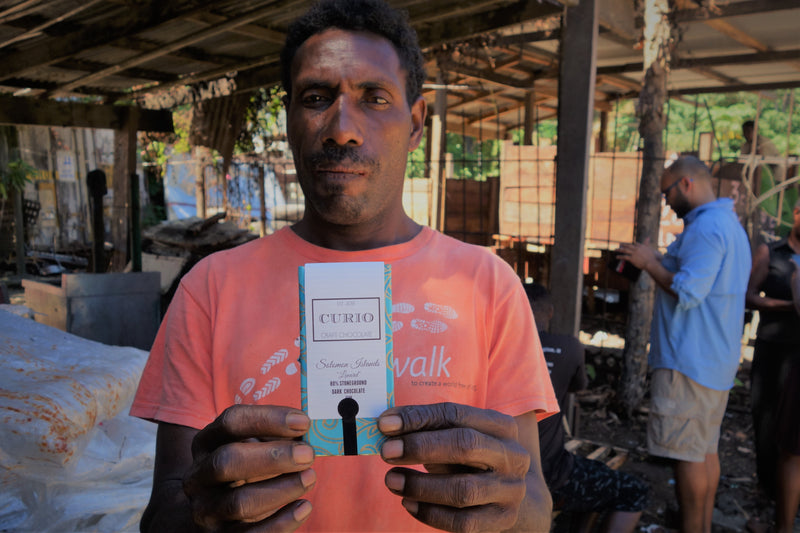Connecting the chocolate dots - Solomons Chocolate Week
The chocolate world can get a little rarified at times. Is tahini the most on-trend chocolate addition or chia seeds and tumeric? Perhaps you would like to try chocolate infused with ginger, wasabi and sesame seeds, or maybe goat’s cheese and pears takes your fancy.
Chocolate makers and chocolatiers love to try different flavour combinations and there’s no doubt chocolate lovers are keen to try something new. But chocolate comes from cacao beans and these are, almost without exception, grown by poor farmers in third world countries near the equator. Farmers who may not have even eaten chocolate, let alone a chocolate made from their own beans.
Connecting the dots between cacao farmers on the one hand, and chocolate makers on the other is the reason why the Solomon Islands Chocolate Festival SolChoc is important. The heat and humidity of Honiara is a world away from your standard chocolate festival where chocolate enthusiasts get to try a multitude of styles and talk brands and flavours to their heart's content.
 Samples of chocolate made from Solomon Islands beans ready for tasting at SolChoc.
Samples of chocolate made from Solomon Islands beans ready for tasting at SolChoc.
SolChoc starts about three months prior to the actual competition when farmers select 5kg of beans and send them in for judging. Many of the samples will come from remote islands and involve a long journey before they get to the capital for an initial selection that weeds out smokey, mouldy or badly fermented beans. The team of judges - all chocolate makers - start four elimination rounds until they are down to a top 10. The final group is roasted and refined to make a sample batch of chocolate, from which an overall winner is found.
The first year was 2016 when 80 samples were submitted. This year there were 158. The prestige is huge for the farmer who wins each year and some farmers have gone on to success in international cacao awards. The idea for the festival is to encourage farmers to improve their crop management and bean processing so that more beans will pass a quality test.
 Farmers investigate a new solar drying option.
Farmers investigate a new solar drying option.
Progress takes time, but this kind of festival could ultimately be a game-changer for the Solomons cacao industry. If Solomons cacao can be recognised as high-quality flavour cacao, those farmers who meet the grade will be able to command much more than the current basic commodity price they’re getting. Cacao is a cash-crop for many villages so improving quality is key to helping communities get more benefit from their work.
 Farmers listen to a talk on block management as part of SolChoc.
Farmers listen to a talk on block management as part of SolChoc.
One of the biggest issues is poor fermentation and drying. Smoke taint is a particular issue with many beans from the Solomons and indeed also neighbouring Papua New Guinea, leading to a somewhat undeserved bad reputation amongst some chocolate makers. Various government agencies who work with the farmers have been promoting solar driers and there are now a number of them around the Solomons. The alternative is hot air drying, with a firebox built under a drying rack. This is not a problem when the firebox is in good condition and is well flued, but if not there is every chance of the beans getting smoke damaged.
 Agnes Pilopaso directing her colleagues.
Agnes Pilopaso directing her colleagues.
The rewards are tangible for the better farmers. After attending the first SolChoc in 2016 as a judge, OCHO has been buying beans from Agnes Pilopaso for the last 18 months. Agnes is hoping to visit Dunedin this year to find out about the other end of the equation - how her beans are turned into chocolate. We will enjoy filling in the blanks in the other direction by showing her around our manufacturing space and teaching her what we know about making chocolate (assuming she doesn’t find the cold too overwhelming).




